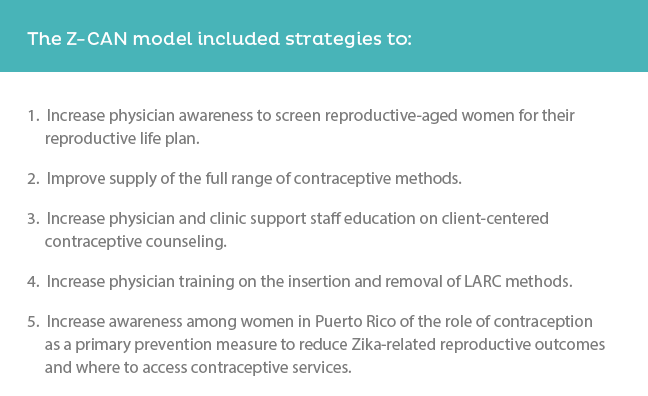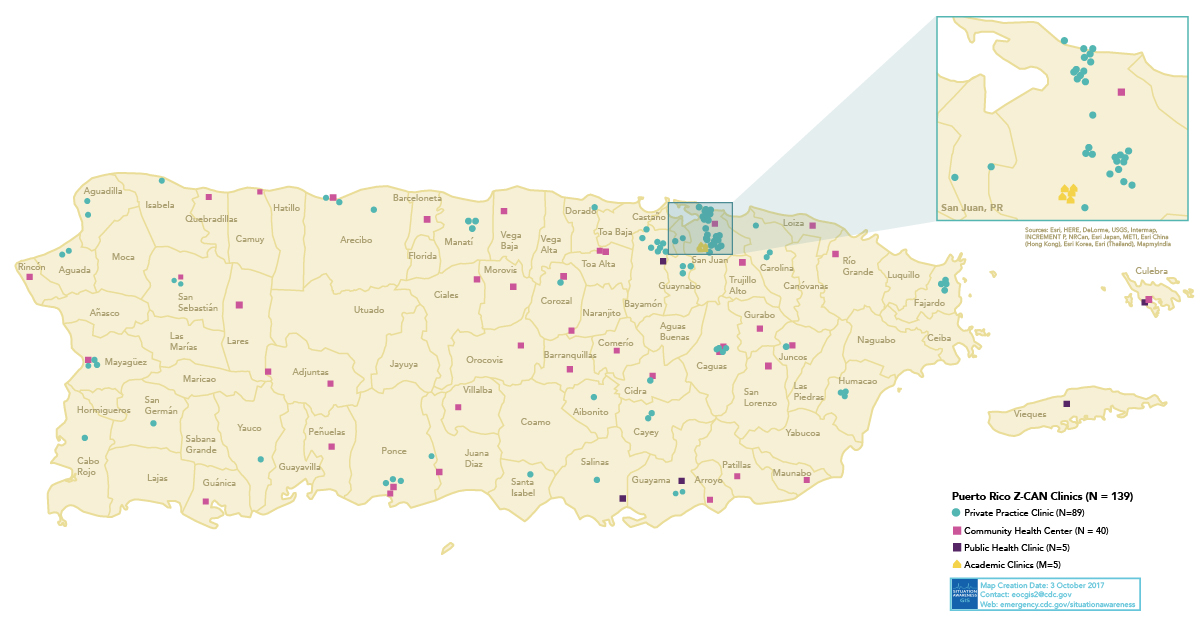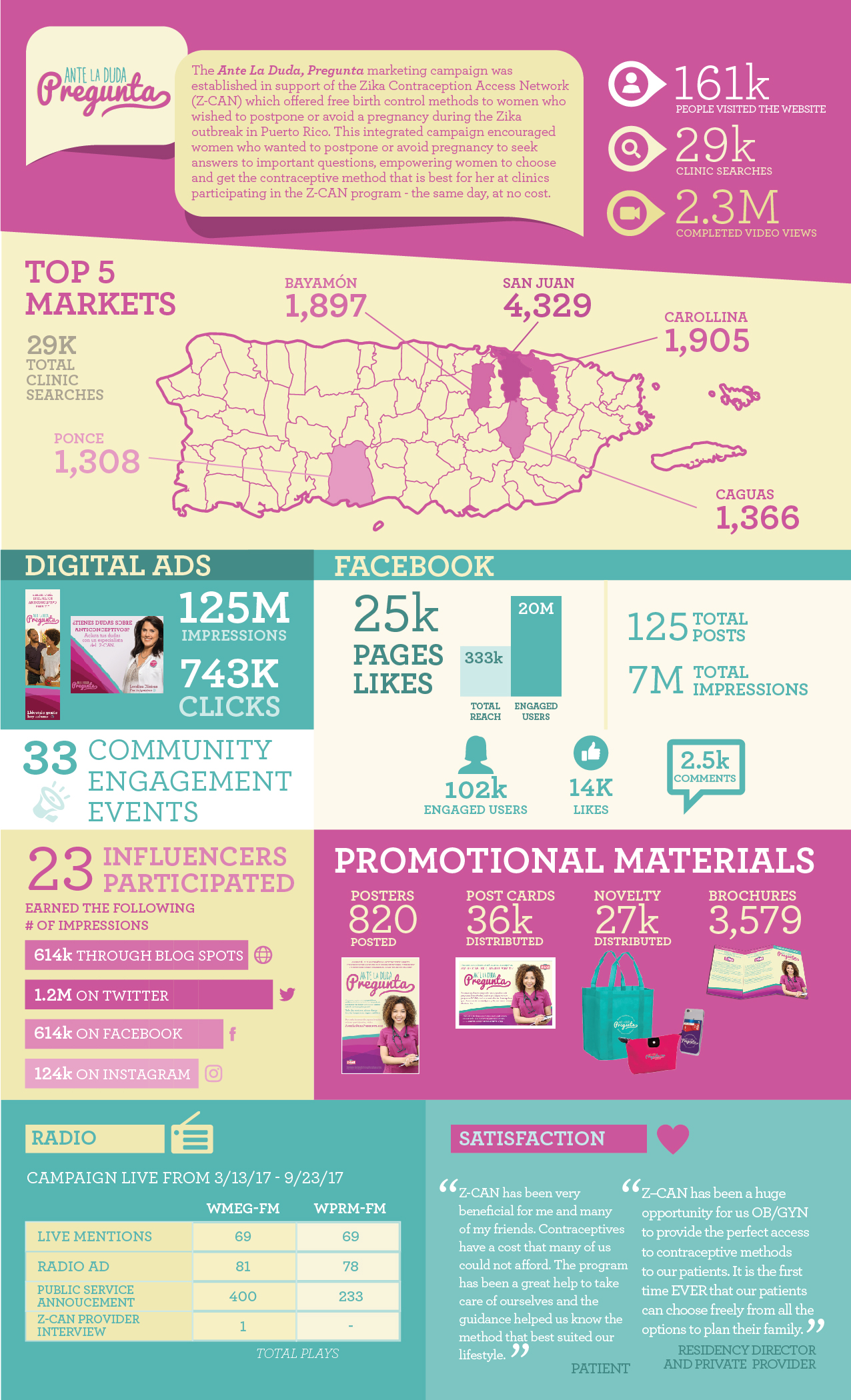
Increasing Access to Contraception:
A Toolkit for Program Development, Implementation, and Evaluation
Women of reproductive age (15-44 years) who are confronted with an emergency or disaster situation are likely to face barriers to contraceptive access and therefore have an increased risk of an unintended pregnancy as a result of lack of access to contraception1. Because of this, it is critical that women of reproductive age are seen as a special population in any emergency setting. Contraception to prevent unintended pregnancy should be considered a key strategy in both public health emergencies where prenatal exposure poses a risk to pregnant women and their infants and in other non-emergency settings in which increased access to contraception could improve health outcomes.
In 2016, outbreaks of Zika occurring in the Americas and increased reports of birth defects in areas affected by Zika were reported to the Centers for Disease Control and Prevention (CDC). The threat of severe birth defects associated with Zika virus infection during pregnancy intensified the need for access to contraception among women who chose to delay or avoid pregnancy during a Zika outbreak. Contraception was used as a medical countermeasure to reduce adverse Zika-related outcomes during the outbreak.
1Ellington SR, Kourtis AP, Curtis KM, Tepper N, Gorman S, Jamieson DJ, et al. Contraceptive availability during an emergency response in the United States. J Womens Health (Larchmt). 2013;22(3):189-93.
The purpose of Increasing Access to Contraception: A Toolkit for Program Development, Implementation, and Evaluation is to disseminate information, resources, and tools used in the development, implementation and evaluation of the Z-CAN program and to share lessons learned. This Increasing Access to Contraception Toolkit provides a "how to" for others who are interested in learning about, replicating, or adapting key components of the Z-CAN program in other settings.
Each Section in this Increasing Access to Contraception Toolkit includes a summary of the purpose of the Section and how it can be applied broadly, using specific examples from Z-CAN. Links to actual Z-CAN documents, tools, forms, and resources are provided in the Resource Library. The Increasing Access to Contraception Toolkit consists of nine Sections:
- Section 1: Program Design
- Initial activities for building an effective, sustainable intervention
- Section 2: Program Start-up
- Building the foundation of an intervention or program
- Section 3: Program Implementation
- Putting the intervention or program into practice
- Section 4: Communications
- Reaching out to engage the target audience and maximize the opportunity for success
- Section 5: Monitoring and Quality Assurance
- Collecting and using patient encounter information to ensure all participants receive high-quality services
- Section 6: Evaluation
- Developing the means to monitor and evaluate a program to document success and gather feedback for continuous program improvement
- Section 7: Program Close Out
- Planning to transition or close-out a program
- Section 8: Sustainability and Replication
- Maintaining the program’s services and benefits over time
- Section 9: Dissemination
- Planning to share program findings and products with others
Our hope is that through sharing the Z-CAN model, strategies, and lessons learned from the Z-CAN program, others can replicate or adapt the model in diverse settings as part of emergency preparedness and response efforts or in other non-emergency settings in which increased access to contraception could improve health outcomes.
During the 2016-2017 Zika virus outbreak, Puerto Rico had the highest number of Zika virus infections in the United States, a high proportion of unintended pregnancies and limited access to contraception, including long-acting reversible contraception (LARC; intrauterine devices [IUD] and implants). To address these immediate needs in Puerto Rico, the National Foundation for the Centers for Disease Control and Prevention, Inc. (CDC Foundation), with technical assistance from the CDC and in collaboration with a diverse group of stakeholders in Puerto Rico and philanthropy, established the Zika Contraception Access Network (Z-CAN) in Puerto Rico. Z-CAN established a network of trained physicians across Puerto Rico to provide client-centered contraceptive counseling and offered women same-day access to the full range of FDA-approved reversible contraceptive methods at no cost.

The Z-CAN model included strategies to:
- Increase physician awareness to screen reproductive-aged women for their reproductive life plan.
- Improve supply of the full range of contraceptive methods.
- Increase physician and clinic support staff education on client-centered contraceptive counseling.
- Increase physician training on the insertion and removal of LARC methods.
- Increase awareness among women in Puerto Rico of the role of contraception as a primary prevention measure to reduce Zika-related reproductive outcomes and where to access contraceptive services.
The Z-CAN program served more than an estimated 28,000 women from May 2016 to September 2017. Over two-thirds of women (approximately 70 percent) chose and received a LARC method; 23 percent chose either oral contraceptive pills, the transdermal patch, the vaginal ring, or depo medroxyprogesterone acetate injection; 3 percent chose condoms alone; and 4 percent did not receive a contraceptive method.


The Ante La Duda, Pregunta health communications campaign was established in support of the Zika Contraception Access Network (Z-CAN), which offered free birth control methods to women who wished to postpone or avoid a pregnancy during the Zika outbreak in Puerto Rico.
This integrated campaign encouraged women who wanted to postpone or avoid pregnancy to seek answers to important questions, empowering them to choose the contraceptive method that was best for them and get the method they preferred at clinics participating in the Z-CAN program – the same day, at no cost.
Below are links to view the marketing materials distributed as part of the campaign.
Digital Marketing
Video Content
Women's Story Videos
Doctor Q&A Videos
- Doctor Fernández-Sifre Q1
- Doctor Fernández-Sifre Q2
- Doctor Fernández-Sifre Q3
- Doctor Vale Q1
- Doctor Vale Q2
- Doctor Vale Q3
Doctor Call-to-Action, Short-Format Videos
Testimonial Videos
Radio Content (PSAs, Ads & On-Air Interviews)
60 Second Ads
WMEG
Radio Interview
Full Campaign Catalog



